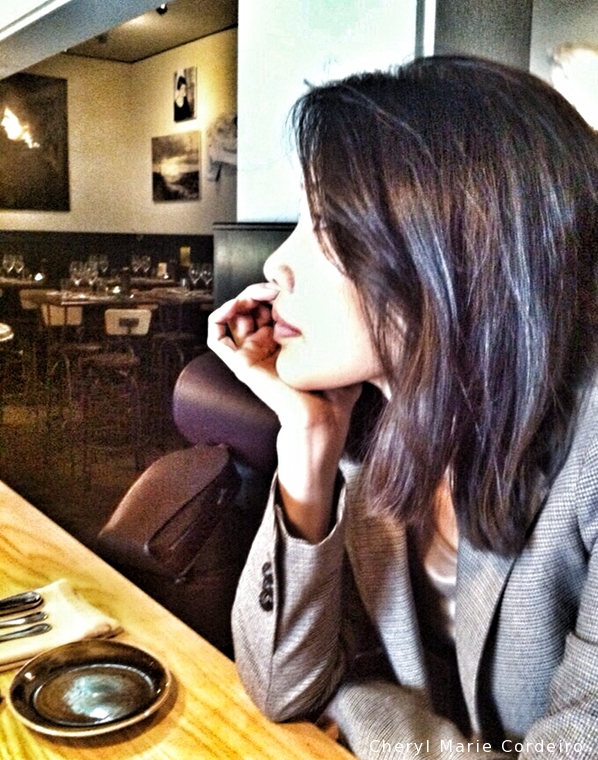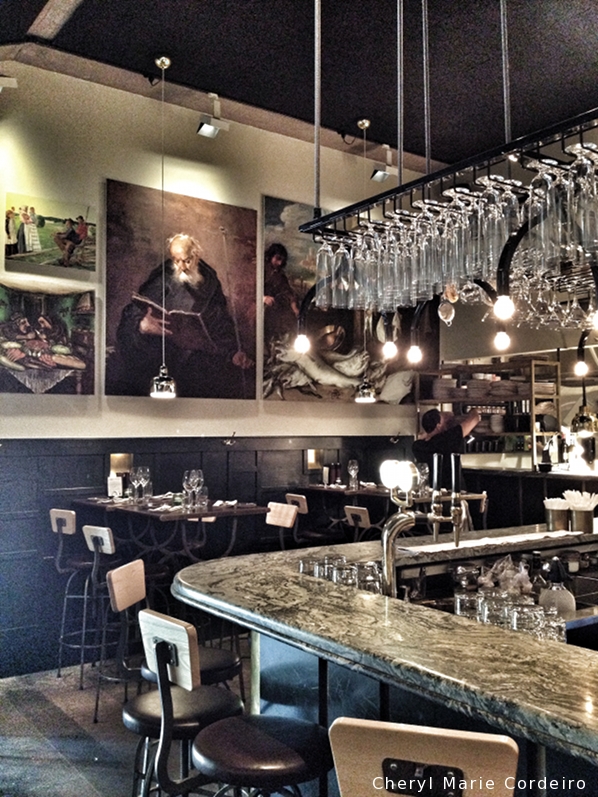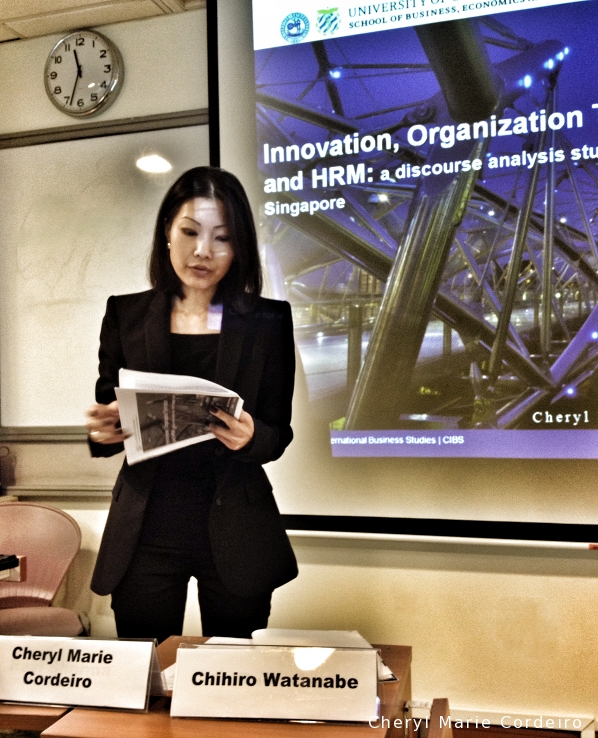
Mr. P, Gothenburg, Sweden.
Text & Photo © JE Nilsson, CM Cordeiro 2014
In SINGAPORE. It was the result of a serendipitous meeting along the street. My first reaction was to believe it to be due to path dependency, although I was pretty sure that was too literal a translation of that theory, that led me to after forty-five minutes, the poignant realization that we were seated at a leveled table speaking across levels.


The topics broached were nothing unusual, life and ambitions in life, of making a successful living, investing for the future, all things nondescript in the context of a highly cosmopolitan city. But as the remains of (what was initially) the molten caramel pecan pie gradually solidified in the minutes that passed, I found myself in a tricky situation.
It seemed as interlocutors, we were speaking in parallels of each other, our points of view never really meeting over a single coherent topic. For one thing, the frequent use of high modalities in the exchange of this discourse fell something like needles on undisturbed surface water tension, over and over. The presence of a hot chocolate in my hand hardly disguised the strict rule-based reality woven in front of me in a seamless narrative.
In such situations, I often find myself in as much surprise at perceived concrete structural constraints, as I lacked in ideas to navigate the situation – when you know you share the same language, the same culture and much of the same upbringing yet have nothing in common in terms of world perspectives. Gödel [1] or Godot? Both? The reason cultural academics can debate the matter no end.
– So tell me, you’ve been there so many years already. What’s different being there than here? Is life easier there? Are they racist there? I heard in the news that they also have immigrant problems and got riots on the streets?
I kept silent while I tried to register the number of implications in those questions.
– Well, over there, purple vegetables are sometimes preferred over green ones and they could think to use spike spindle holders to serve bread. Food is not always served against a white background, and the plate that arrives at your table could well resemble a combined piece of Pollock and Marat that distinctly exudes undertones of Freud.

ICMIT2014 Singapore.
– Oh, they like art is it? I heard it’s a good investment to buy art. But here, pieces of collectible art are very expensive to buy, and I’m not really sure what type of art to invest in also. I’ll need to ask my financial consultant on that one.
The last sentence was added after a moment’s pause in thought. I couldn’t help but smile.
– Yes, you could say so. Art is very popular there. – I said.
I wound my fingers tighter around the form of the mug and brought it slowly to my lips. The liquid chocolate, still warm in the air-conditioned setting of the café. Another minute passed, and another moment of that curiously tricky situation, of a (presumably) shared language and cultural background, yet quite different world perspectives altogether.
Reference
[1] Penrose, R. 2015. Consciousness and the foundations of physics, lecture delivered at the Ian Ramsey Centre, Humane Philosophy Project 2014-2015 Seminar. Chaired by Ralph Weir, Alister McGrath and Mikolaj Slawkowski-Rode. Internet resource at http://bit.ly/1OnabV6. Retrieved 27 Dec. 2015.
Penrose, on Gödel, computationally checkable rules and human understanding [16:33-18:22]:
“If you have such a set of computationally checkable rules, and if you believe these rules give you proof of only true statements, that they don’t for example prove two equals three, and you’ve got reason for believing that those rules do only give you true statements, that’s a key thing, suppose you trust the rules otherwise there is no point in using them, because you don’t know if the rules really work to give you proof, but if you really do trust them, well you can construct, Gödel shows, and Turing has a much easier way of doing it, that from these rules you can construct a very specific mathematical statement, absolutely clear statement which I’m going to call g of r, depends on the rules, g of r, which if we believe in the validity of the rules, we must accept that g of r is true. Yet Gödel’s procedure shows that g of r cannot be proved using the rules. So your trust of the rules enables you to transcend the rules. It’s a very remarkable thing, people often state it in different ways, they say well there are certain things you can never prove. Gödel has shown there are some statements that are unprovable. That’s not what he does. He shows that there are statements that are not provable by methods that you completely trust. So if you have a set of rules that you’re actually prepared to use as methods of proof, in other words you trust them to be correct, then the statement that he constructs is not provable using those rules, that’s true, but yet the very way you construct it shows it’s true. So it doesn’t show a limitation to our understanding, of our procedures of mathematical proof, it just shows us how to transcend those particular rules that we were given before. So in a sense it’s showing the power of human understanding.”